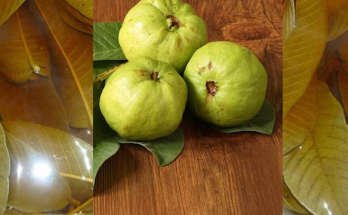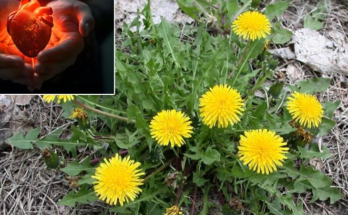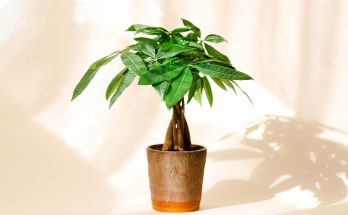It’s everywhere. Across the street at your neighbors. Every house in that new development has it. Your sister grows it in her flower bed next to the backdoor. It’s at the bank as you walk in and in the concrete planter when you walk out of the hairdressers. Every garden center carries it.
I’m talking about catmint, of course, one of the most popular landscaping perennials out there.

And boy, does it show; you can find it practically everywhere.

It makes sense, really. Catmint is hardy in zones 3-8. It’s drought-resistant and cold-tolerant, blooms all summer long, and is easy to grow. It’s no wonder this perennial has found its way into so many gardens and planters.

But for some gardeners, that’s kind of the problem.
What if you’re tired of the same old plants on offer at your local garden center? What should you grow if you want your flower beds to stand out from every other house on the block?

If you’re tired of the same old catmint everyone else is growing, I’ve got five beautiful alternatives that will have friends and neighbors stopping to ask, “What is that?” They’re all similar to catmint in shape and growth habit, and all have purple-blue flowers.
Try growing one of these perennials instead of catmint, or get really wild and grow them in addition to it.
5 Beautiful Perennials to Grow Instead of Catmint
1. Russian Sage (Salvia yangii, previously Perovskia atriplicifolia)

I’m starting with Russian sage as this is a personal favorite of mine. Russian sage looks like a cross between catmint and lavender. It has gorgeous silvery-green foliage that almost glows at dusk. The flowers are tall sprays of lavender-purple.
Russian sage is a pollinator magnet. I don’t think I’ve ever walked by mine when it’s blooming and not seen a bee or butterfly sipping from the tiny flowers. And it smells heavenly. I love dragging my fingers along the stem and smelling its fresh, herbal-lavender-like scent.

Varieties to try:
- Blue Jean Baby – 2-3ft tall and one of the earliest blooming varieties.
- Little Spire – the perfect variety when space is limited as it only grows to about 2ft tall.
- Sage Advice – 3ft tall and 3ft wide, this is a vigorous growing variety.

- Hardiness Zones: 4-9
- Sun: Full sun
- Soil: Well-drained, average soil
- Water: Drought tolerant once established, water often in the first growing season
- Mature Height: 2-4 feet tall, depending on variety
- Bloom Time: Summer to early fall
2. Sea Holly (Eryngium spp.)

If you want something completely different, then you’ll love Sea Holly. This intriguing perennial is a true departure from the easily recognizable flowers of catmint. With its spiky, blue-green leaves and cone-shaped metallic blue flowers, Sea holly is a breathtaking conversation starter. Their sturdy blooms and interesting foliage also make for excellent fresh and dried cut-flowers.
Some varieties also have silver blooms instead of blue. Sea holly is a tough plant that does well in poor, sandy soil. If you’re having trouble getting other plants to grow in an area of your yard with poor, sunbaked soil, give it a try.
Varieties to try:

- Blue Glitter – 3ft tall with icy blue blooms.
- Jade Frost – 2ft tall with shimmering foliage.
- Hardiness Zones: 4-9
- Sun: Full sun
- Soil: Well-drained, sandy soil
- Water: It has a long tap root, which makes it quite drought-tolerant—water as needed once established.
- Height: 1-3 feet tall
- Bloom Time: Summer to fall
3. Bluestar (Amsonia spp.)

Bluestar is a compact perennial shrub with lovely, pale blue flowers that are (naturally) star-shaped. The foliage ranges from a vivid green to a deep olive green.
As the season progresses, the leaves turn a beautiful gold in the fall, adding another pop of color while other plants are waning. When it’s blooming, it looks like bursts of blue fireworks on top of mounds of green foliage. Depending on the variety, blooms can be pale sky blue to an almost electric blue-purple.

Varieties to try:
- Blue Ice – 1.5 ft tall, much deeper blue, almost purple flowers.
- String Theory – 1.5-2ft tall, feathery, green leaves with compact blooms on top.
- Storm Cloud – 2-3ft tall, black stems and periwinkle blooms.
- Hardiness Zones: 4-9
- Sun: Full sun to part shade
- Soil: Moist, well-drained soil
- Water: Average water needs
- Height: 1-3 feet tall
- Bloom Time: Late spring to early summer
4. False Indigo (Baptisia spp.)

False Indigo is an underrated stunner with a growth habit similar to catmint but with much more striking blooms. This perennial grows stalks of pea-like flowers in shades of electric blue, deep purple, buttery yellow, or white. They also have lovely blue-green leaves, making them appealing even when they aren’t in bloom.

Varieties to try:
- Lunar Eclipse – 3-4ft tall with gorgeous flowers starting blue at the base and fading to white at the top.
- Pink Lemonade – 3-4ft tall, a beautiful sunset pink fading to yellow
- Sparkling Sapphires – 3-4ft tall, the name says it all, a beautiful “blurple.”
- Hardiness Zones: 3-9
- Sun: Full sun to part shade
- Soil: Well-drained, fertile soil
- Water: Water while the plant is getting established and as needed if you experience long periods without rain.
- Height: 3-4 feet tall
- Bloom Time: Late spring to early summer
5. Delphinium (Delphinium spp.)

While delphiniums don’t grow an abundance of green shrubbery like catmint, I had to put them on this list. Grown in a cluster, their tall spikes of showy, spurred flowers in shades of blue, purple, pink, or white look like something out of a watercolor painting. They add height and interest to areas of your flowerbed where catmint would fit in. They also make lovely cut flowers, whether in bunches or a single bloom in a vase.
Varieties to try:

- For delphiniums, I highly recommend ordering a mix of varieties, as they look best with several different colors planted together.
- Hardiness Zones: 3-7
- Sun: Full sun to part shade
- Soil: Rich, well-drained soil
- Water: Even moisture
- Height: 3-6 feet tall
- Bloom Time: Early to midsummer
Of course, there’s nothing wrong with growing catmint. There’s a reason it’s so popular – it’s beautiful, easy to care for and one tough little plant that keeps coming back year after year. Whether you choose to keep growing catmint or try something different, your garden will be beautiful.



